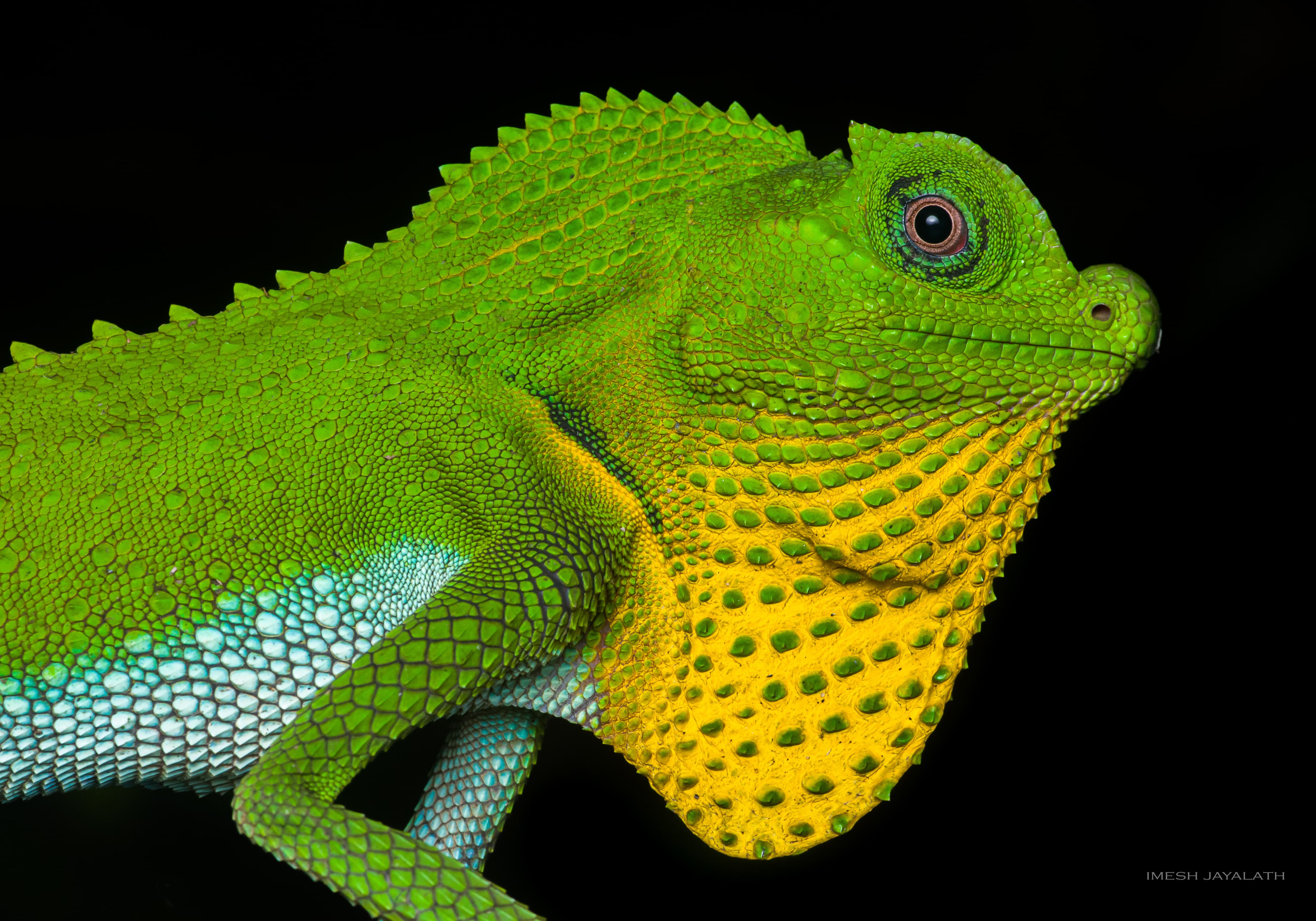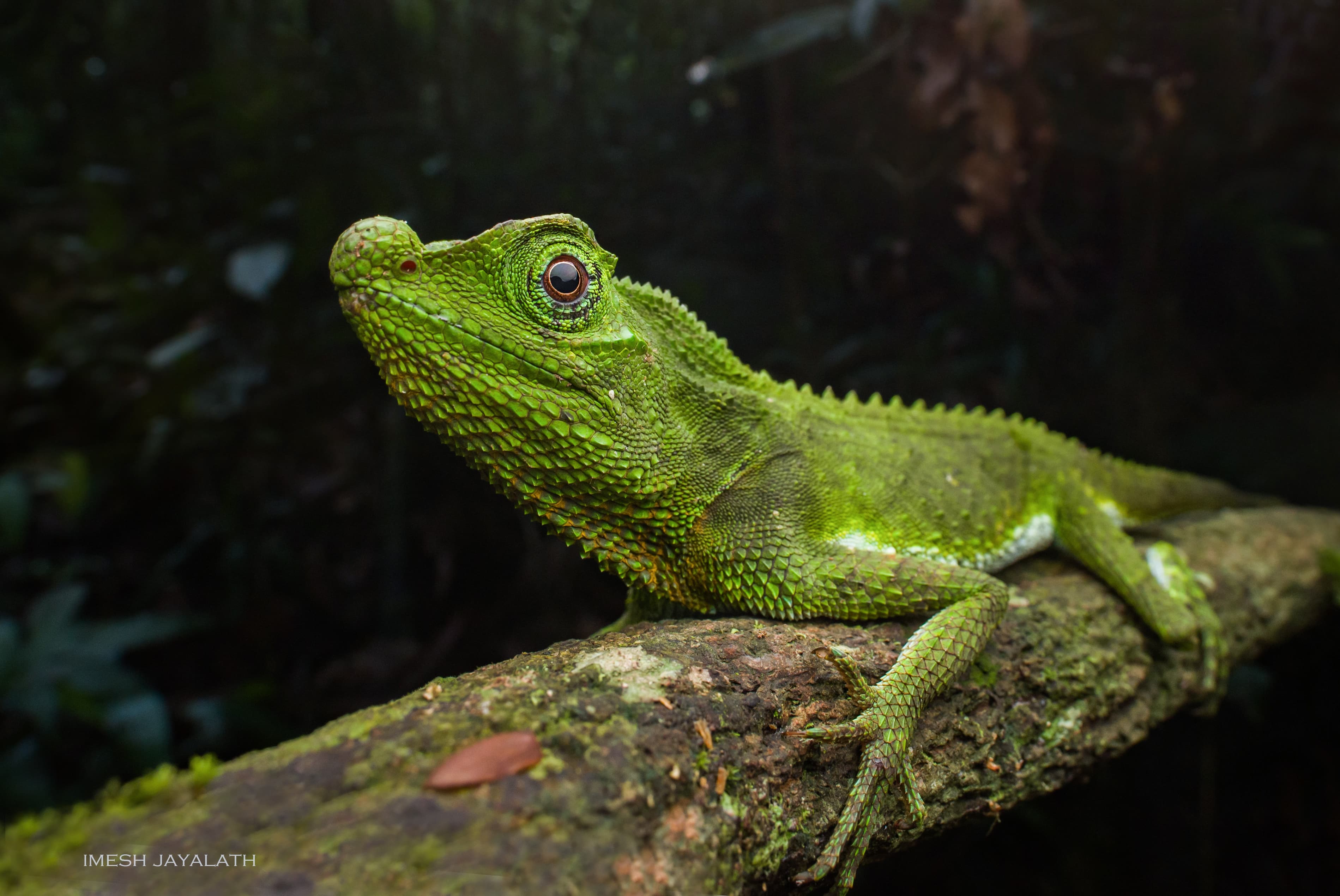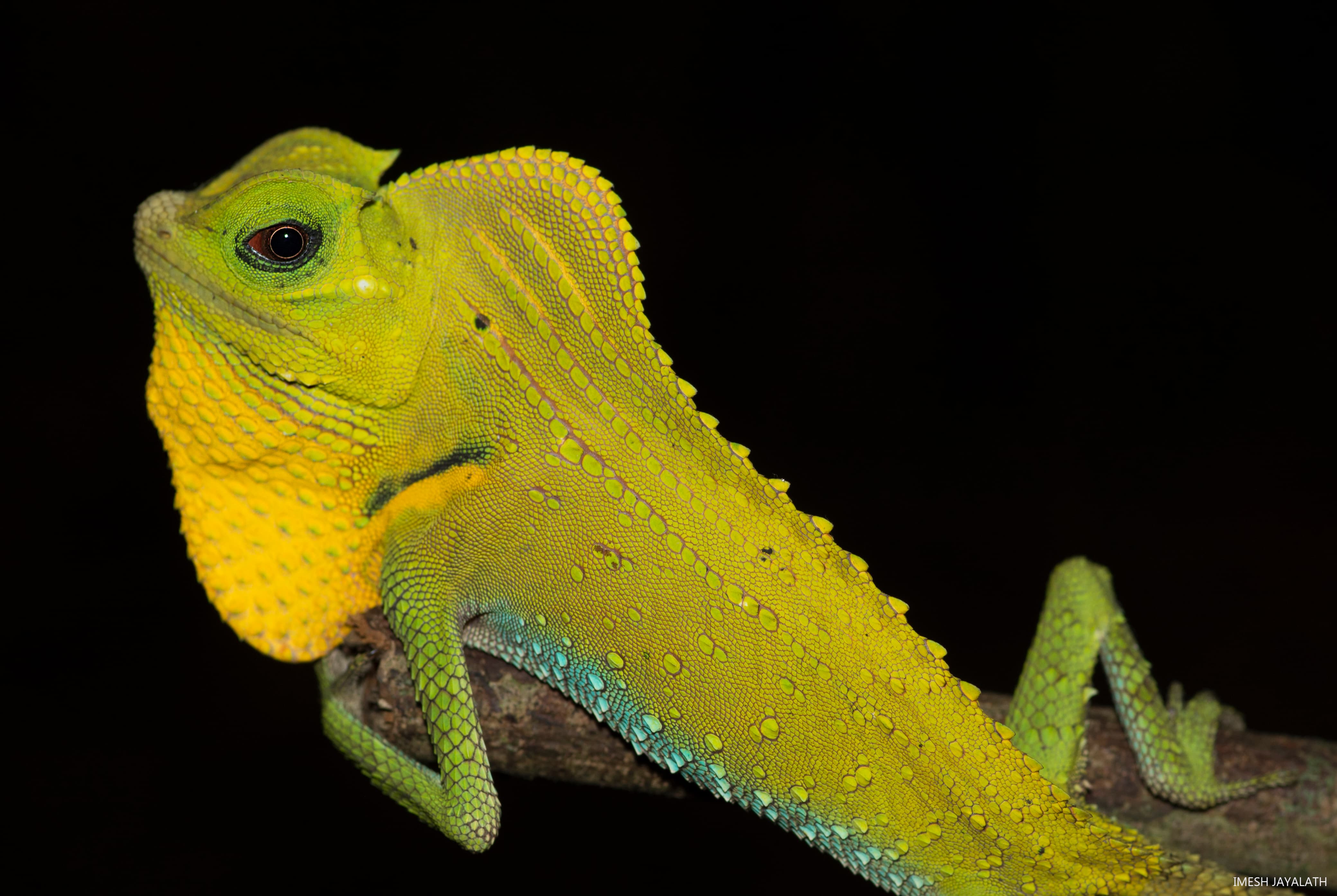
Contributor

Hump-nosed lizard
The Hump-nosed lizard or lyreshead lizard, is the largest agamid lizard found only in Sri Lanka. It lives in the dense, wet zone forests of the island, ranging from lowland rainforests to midhills, up to elevations of about 1650 meters. This species is known locally in Sinhalese as Kandukara Bodilima and is recognized by the distinctive bony hump on its head that gives it its common name.

Hump-nosed lizard
This lizard has a laterally flattened body, a short blunt tail, and keeled scales along the throat and forehead. Males are brightly colored in green with a yellow throat pouch and neck sail, while females are usually brown, especially in the presence of males. A unique V-shaped gular sac and a pair of spines at the back of the head add to its striking look. Its threat display includes opening its mouth to show a bright red oral lining, and it is known to "play dead" when disturbed.

Leaf Nosed Lizard
Lyriocephalus scutatus is active during the day, often seen on tree trunks or forest floors, and sleeps in higher branches at night. It feeds mainly on earthworms and insects like termites, butterflies, and moths, but it also eats plant matter such as young shoots and buds. The female lays between 1 to 11 eggs at different times of the year, burying them in the soil, sometimes under bushes. The eggs take about 35 days to hatch. This lizard’s behavior, appearance, and habitat all make it one of the most fascinating reptiles in Sri Lanka’s forests.